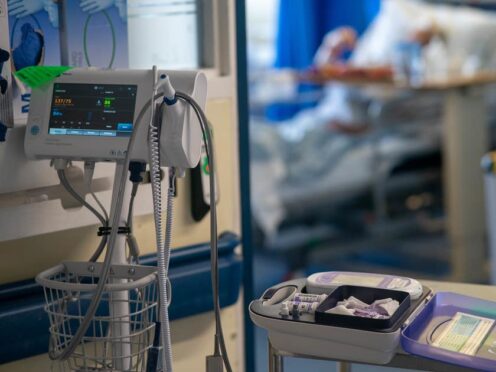Conservative MP Craig Mackinlay has spoken of his sepsis ordeal.
But what is sepsis? Here the PA news agency answers questions on the signs, symptoms and treatments.
– What is sepsis?
Sepsis is a life-threatening reaction to an infection.
It occurs when the body’s immune system overreacts to an infection and starts to damage the body’s own tissues and organs.
– How many people have sepsis every year?
In the 245,000 people are affected by sepsis every year in the UK – including around 2,000 children.
– Is it deadly?
It can be fatal – in fact, the UK Sepsis Trust says five people die with sepsis every hour in the UK.
Around 48,000 people lose their lives to sepsis-related illnesses every year in the UK.
– What are the signs and symptoms?
Today is #WorldSepsisDay
Sepsis is a deadly reaction to infection, killing 5 people every hour in the UK—more than breast, bowel & prostate cancer combined 💔
❗ Learn to spot the symptoms—early detection saves lives!
🤝 RT & visit https://t.co/gesD9II9ge. Help us #StopSepsis pic.twitter.com/ctHlUYqZLt
— Royal Surrey (@RoyalSurrey) September 13, 2023
Sepsis can be very difficult to spot, but if it is caught early it is easily treatable.
In adults and older children, symptoms can include slurred speech or confusion; extreme shivering or muscle pain; passing no urine in a day; severe breathlessness; and mottled or discoloured skin and sometimes a rash that does not fade when you roll a glass over it.
In children, symptoms can include fast breathing; having a fit or convulsion; mottled, bluish, or pale skin; being lethargic or difficult to wake or if they feel abnormally cold to touch; a rash that does not fade when pressed; and a weak, high-pitched cry that is not like their normal cry.
Symptoms to look out for in children under five also include not feeding; repeated vomiting; and not passing urine for at least 12 hours.
Experts recommend that people with these signs and symptoms should seek help urgently and ask medics: “Could it be sepsis?”
Just ask: could it be sepsis? 🤔💚
Every year in the UK, 250,000 people are affected by sepsis; 44,000 die. It’s more common than heart attacks and kills more people than bowel, breast and prostate cancer and road accidents combined!#sepsis #coulditbesepsis #sepsisawareness pic.twitter.com/Xh9u0a2RC4
— West Midlands Ambulance Service #HelpUsHelpYou (@OFFICIALWMAS) January 26, 2023
– Who can get it?
Anyone with an infection can get sepsis.
According to nhs.uk there are some groups who are more likely to get an infection which could lead to sepsis, including babies under one, particularly if they were born prematurely; over-75s; people with dementia; people with a weakened immune system; people with a genetic disorder that affects their immune system; people who have recently had surgery or a serious illness; and women who have just given birth, had a miscarriage or an abortion.
– What is the treatment?
People with sepsis need prompt hospital care because it can get worse very quickly.
Where sepsis is suspected, patients should be put on antibiotics within one hour of arriving at hospital.
If sepsis is not treated early, it can turn into septic shock and cause the body’s organs to fail.
People may need additional support in intensive care units – a ventilator to help them breathe or surgery to remove areas of infection.
– Why would a person with sepsis need amputation?
Amputation of limbs is a relatively rare complication of sepsis, affecting an estimated 1 to 2% of survivors.
Sepsis can cause small blood clots in the tiny blood vessels supplying the peripheries of the body, it can also affect the way blood flows around the body.
The use of medicines to counteract low blood pressure may also contribute. These medicines, called vasopressors, constrict blood vessels and send the blood back to the core organs – in a bid to try to protect blood flow to those organs – but an adverse consequence is that the medicines may reduce blood flow to some parts of the body.
– Are there longer-term health implications for survivors?
Around two in five (40%) people who develop sepsis are estimated to suffer physical, cognitive, and/or psychological after-effects.
According to the NHS, people can continue to have physical and emotional symptoms which can last for months or even years after a person has had sepsis.
– Where can I find out more?
The UK Sepsis Trust has a wealth of information on the condition – https://sepsistrust.org/ – and people can also learn more about it on the NHS website – www.nhs.uk/conditions/sepsis/
